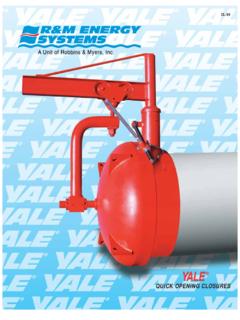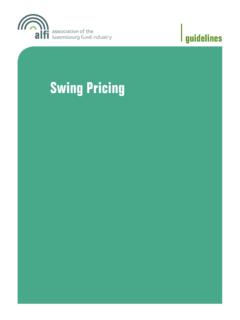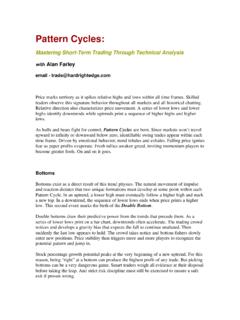Transcription of A Case Study: Point-of Sale - ntut.edu.tw
1 Software Engineering1 Object-oriented Analysis and DesignSoftware Requirement Specification Software Engineering2 Object-oriented Analysis and DesignRequirements Analysis 1As Marketing requested Engineering3 Object-oriented Analysis and DesignRequirements Analysis 2As Sales ordered Engineering4 Object-oriented Analysis and DesignRequirements Analysis 3As Engineering designed Engineering5 Object-oriented Analysis and DesignRequirements Analysis 4As Production manufactured Engineering6 Object-oriented Analysis and DesignRequirements Analysis 5As Maintenance installed Engineering7 Object-oriented Analysis and DesignRequirements Analysis 6 What the customer Engineering8 Object-oriented Analysis and DesignA Short Example 1 Define Use Cases Play a Dice Game use case : Player requests to roll the dice. System presents results: If the dice face value totals seven, player wins; otherwise, player DiesplayerDie GameSoftware Engineering9 Object-oriented Analysis and DesignA Short Example 2 Define a Domain Model creating a description of the domain from the perspective of objects.
2 There is an identification of the concepts, attributes, and associations that are considered Engineering10 Object-oriented Analysis and DesignA Short Example 3 Assign Object Responsibilities and Draw Interaction Diagrams to illustrate these collaborations is the sequence diagram. It shows the flow of messages between software objects, and the invocation of methods.:DiceGameplay()die1 : Diefv1 := getFaceValue()die2 : Dieroll()roll()fv2 := getFaceValue()Software Engineering11 Object-oriented Analysis and DesignA Short Example 4 Define Design Class Diagrams a static view of the class definitions is usefully shown with a design class diagram. This illustrates the attributes and methods of the : intgetFaceValue() : introll()DiceGamedie1 : Diedie2 : Dieplay()1 Software Engineering12 Object-oriented Analysis and DesignCase study Software Engineering13 Object-oriented Analysis and DesignProblem Description 1 The Point-of -Sale terminal is a computerized system used to record sales and handle payments; it is typically used in a retail store.
3 It includes hardware components such as a computer and bar code scanner, and software to run the system. It interfaces to various service applications, such as a third-party tax calculator and inventory control. These systems must be relatively fault-tolerant; that is, even if remote services are temporarily unavailable (such as the inventory system), they must still be capable of capturing sales and handling at least cash payments (so that the business is not crippled).Software Engineering14 Object-oriented Analysis and DesignProblem Description 2 A POS system increasingly must support multiple and varied client-side terminals and interfaces. These include a thin-client Web browser terminal, a regular personal computer with something like a Java Swing graphical user interface, touch screen input, wireless PDAs, and so forth.
4 Furthermore, we are creating a commercial POS system that we will sell to different clients with disparate needs in terms of business rule processing. Each client will desire a unique set of logic to execute at certain predictable points in scenarios of using the system, such as when a new sale is initiated or when a new line item is added. Software Engineering15 Object-oriented Analysis and DesignProblem Description 3 Therefore, we will need a mechanism to provide this flexibility and customization. Using an iterative development strategy, we are going to proceed through requirements, object-oriented analysis, design, and Engineering16 Object-oriented Analysis and DesignRequirement 1 Requirements artifacts Use case Model Supplementary Specification (Non-functional requirements) -Reference Glossary (Data dictionary) System Sequence DiagramSoftware Engineering17 Object-oriented Analysis and DesignRequirement 2 Requirements are categorized according to the FURPS+ model.
5 Functional: features, capability, security Usability: human factors, help, documentation Reliability: frequency of failure, recoverability, predictability Performance: response times, throughput, accuracy, availability, resource usage. Supportability: adaptability, maintainability, internationalization, configurabilitySoftware Engineering18 Object-oriented Analysis and DesignRequirement 3 The + in FURPS+ indicates sub-factors Implementation: resource limitation, languages and tools, hardware, .. Interface: constraint imposed by interfacing with external systems Operations: system management in its operational setting Packaging: a physical boxSoftware Engineering19 Object-oriented Analysis and DesignUse case Model Software Engineering20 Object-oriented Analysis and DesignUse case Model Use case model Be the set of all written use cases; it is a model of the system's functionality and environment.
6 Be not the only requirement artifact in the UP. There are also the Supplementary Specification, Glossary, Vision, and Business Rules. may optionally include a UML use case diagram to show the names of use cases and actors, and their relationships. This gives a nice context diagram of a system and its environment. Software Engineering21 Object-oriented Analysis and DesignUse case DiagramsBuy ItemsLog InRefund PurchaseditemsCashierCustomerPOSTS ystemboundaryActorUse caseInformationFlowSoftware Engineering22 Object-oriented Analysis and DesignActors Actor: external entity interacts (behavior) with system, such as a person (identified by role), computer system, or organization; for example, a cashier. Three kind of Actors Primary actor has user goals fulfilled through using services. ( , the cashier). Find user goals to drive the use cases.
7 Supporting actor provides a service ( , the automated payment authorization service is an example). Often a computer system, but could be an organization or person. The purpose is to clarify external interfaces and protocols. Offstage actor has an interest in the behavior of the use case , but is not primary or supporting ( , a government tax agency).Software Engineering23 Object-oriented Analysis and DesignUse case 1 Use case is a collection of related success and failure scenarios that describe an actor using a system to support a goal. be text documents, not diagrams Use case modeling is primarily an act of writing text, not drawing diagrams. There is nothing object-oriented about use cases; Use cases are a key requirements input to classic OOA/D. be functional or behavioral requirements that indicate what the system will do.
8 In terms of the FURPS+ requirements types, they emphasize the "F", but can also be used for other Engineering24 Object-oriented Analysis and DesignUse case 2 The usage of use case Decide and describe the functional requirements of the system Bring agreement between the customer and software developer Give a clear and consistent description of what the system should do. Provide a basis for performing tests that verify the system delivers the functionality stated. Trace the functional requirements into actual classes and operations in the Engineering25 Object-oriented Analysis and DesignScenarios 1 Scenario be a specific sequence of actions and interactions between actors and the system; it is also called a use case instance. It is one particular story of using a system, or one path through the use case .
9 For example, the scenario of successfully purchasing items with cash, or the scenario of failing to purchase items because of a credit payment would like a book of stamps, will be $ is $ Here are your stamps and your Will that be all?Software Engineering26 Object-oriented Analysis and DesignScenarios 2 Scenario A use case represents a collection of scenarios: primary, plus zero or more alternates. The primary scenario corresponds to the main system interactions, usually the success scenario. Alternate scenarios correspond to less frequent interactions and exceptions. Software Engineering27 Object-oriented Analysis and DesignThree Common Use case Formats Brief (high level) Terse one-paragraph summary, usually of the main success scenario. During early requirements analysis, to get a quick sense of subject and scope.
10 May take only a few minutes to create. Fully dressed All steps and variations are written in detail, and there are supporting sections, such as preconditions and success guarantees. After many use cases have been identified and written in a briefformat, then during the first requirements workshop a few (such as 10%) of the architecturally significant and high-value use cases are written in Engineering28 Object-oriented Analysis and DesignBrief Use case Example 1 Use case : Buy Items Actors: Customer, Cashier Type: Primary Description: A customer arrives at checkout with items to purchase. The Cashier records the purchase items and collects payment, On completion, the Customer leaves with the Engineering29 Object-oriented Analysis and DesignUse case Scenario: Buy Items 11. When a a Customer arrives at the POS Terminal checkout with items to The Cashier records each items.







